Fernando Solano Donado
Project Coordinator
Warsaw University of Technology
Inst of Telecommunications
fs@tele.pw.edu.pl | +48 22 234 7636

Warsaw University of Technology is the largest technical university in Poland – a
central Polish state university, with 17 faculties, 600 professors, 1200 assistant
professors, 800 of other academic staff, and more than 30,000 students. The
Faculty of Electronics and Information Technology is composed of six institutes
including the Institute of Telecommunications (IT). IT employs 70 researchers
and carries on educational, scientific and research activities covering a wide
range of domains – architectures, modeling, design, optimization and
performance analysis of telecommunication networks, transmission systems,
information security, image processing, programmable circuits, protocol
verification and testing, multimedia systems, and also organizational, economic,
and legal aspects of telecommunications. IT cooperates with major network
operators and equipment vendors present on the Polish market. Institute of
Telecommunications has participated in the following European research
projects: COST 242, COST 257, COST 279, COST 293, COST IC0703 (TMA), 5FP ISTAQUILA,
6FP IST-MOME, 6FP IST-EuQoS, 6FP TWISTER, 6FP SIMS, 6FP MIDAS, EuroNGI,
Euro-FGI, Euro NF, 7FP ProSense, 7FP NAPA-WINE, 7FP EFIPSANS, 7FP
POBICOS, TrustMAS, Celtic/Eureka MANGO.
The role of WUT in µMole is two-fold. First, it will perform project coordination
(see WP1), and 2) it will lead tasks concerning the design, and development of
the Remote Control Subsystem software and the data security framework
required (see WP6).
Central Forensic Laboratory of the Police is a research institute operating in the area of forensic science delivery. CFLP main role is to carry out research and development activity in addition to the improvement of forensic technologies for a more efficient crime prevention and detection process.
CLKP, with a manpower of more than 200 employees, is responsible for elaboration of the most challenging and complex forensic caseworks in the wide range of forensic disciplines, such as the examination of handwriting, questioned documents, audio analysis, fingerprint and DNA examinations, toolmarks and ballistics, just to mention a few. Dedicated forensic databases (AFIS, DNA),
collections and files maintained in the laboratory constitute a valuable tool in expert routine work.
Nationally, the CFLP supervises the entire network (17) of police forensic laboratories including scene of crime units in terms of scientific support, develops forensic examination methodologies and promotes quality management issues nationwide. This area of activity requires the development of continuous professional improvement schemes for police forensic experts and scene of crime officers for which the Laboratory is also responsible. At the national level, the laboratory is engaged in a number of research projects funded from the Ministry of Science and High Education, National Centre for Research and Development in particular. On the European level, the Institute has been a member of ENFSI (European Network of Forensic Science Institutes) since 1995, maintains co-operation with other forensic institutes and universities and actively takes part in the EU-funded programmes, such as CEPOL (European Police College) grant as regards the organization of courses for dismantling illicit drug laboratories or European Commission ISEC “Prevention of and Fight Against Crime†regarding the development and setting up of international tool “Forensic Aid in Vehicle Identificationâ€.
The Institute has been accredited according to EN ISO/IEC 17025 standard as well as ISO 9001, and maintains the quality management system in place.
The role of CFLP in microMole would be to identify the substances to become markers in detection of illicit drug laboratory and, in the first place, to determine the intensity of these substances/compounds in postproduction waste as well as their persistence in waste depending on the presence of other substances (including the ones of basic or acidic pH, which is determined by the synthesis stage), similarly as this would be the case in natural conditions. Basing on the above data, the duration of required monitoring and collection of data by pipe-installed devices could be estimated. CFLP personnel would be also responsible for examination of waste samples collected in real scenarios to detect possibly the presence of previously identified markers.
The Bundeskriminalamt (BKA) dates back to March 1951. At that point in time, the ‘Law on the Establishment of a Federal Criminal Police Office’ came into force. The development of the BKA as the criminal police of the German Federation over more than 60 years must be viewed in the context of social and political developments as well as technical progress. Together with the other police forces of the Federation and the Federal states and in co-operation with foreign security agencies, the BKA makes an active contribution to maintaining internal security in a free, democratic Europe. By acting in a constitutional manner, the BKA provides services to the citizens and to the state, as a matter of social responsibility, and thereby works towards the implementation of the value system laid down in the Constitution of the Federal Republic of Germany. The Bundeskriminalamt is an essential cornerstone in a comprehensive system of
crime control and works as a partner with the police forces of the Federation and of the individual German states.
The Forensic Science Institute of the BKA is one of the nine departments in the Federal office with about 300 employees (including 80 court-going scientists).
The institute is accredited according to DIN/ISO 17025 and 17020, and maintains the quality management system in place.
The toxicological section (KT 34) of the BKA consists of a team of 5 forensic experts, 8 technicians and (at present) 2 PhD students. It is specifically responsible for qualitative and quantitative analysis of drug samples and poisons, including eco-drugs, doping agents and pharmaceutical preparations, confiscated by the police and customs. Additionally it performs chemical impurity profiling of heroin samples and the complex ATS analyses routinely. The “Central Analysis Programme Ecstasy†(CAPE) has been initiated with the aim of finding solutions and devising a scheme for coping with these complex challenges on a national and international level.
On a European level, KT 34 has participated as a partner in the EU-ATS-profiling project CHAMP (2004-2006) and in the European CHAIN programme (Amphetamine-profiling).
The main aim of the Collaborative Harmonised Amphetamine INitiative (CHAIN) project, which progressed between November 2006 and November 2008, was to establish a European Drugs Profiling System (EDPS) for amphetamine. In 2009 the project EDPS was set up by Law Enforcement Officers and Forensic Experts from seven countries, in cooperation with Europol. Amphetamine was the substance in focus, but the system as such has been developed to allow for expansion to other illicit drugs. Up to now KT34 is an active partner in supplying the EDPS.
Furthermore KT 34 is intensely engaged in internally funded as well as externally funded (National and European Research Programmes) research and development projects, based on the requirement of the BKA law to conduct forensic examinations on the highest scientifical level and state of the art. Concerning the objectives of the Micromole project, KT 34 gathered experience conducting several in-house studies including B.Sc. theses on controlled synthesis of amphetamine via Leuckart-reaction and amphetamine precursors like P2P, synthesized from phenylacetic acid or by conversion of APAAN (α- phenylacetoacetonitrile).
Based on these studies ongoing projects like SAFE INSIDE and MIME are provided with authentic sample material for characterisation and identification of relevant by-products all over any individual synthesis step or evaluation of sample preparation for on-side analysis via GC/MS using SPME technique. Furthermore, the outcome of these products is directly transferred to forensic case work and expert court testimonies, especially related to the production assessment and forensic examination of seized clandestine synthetic drug laboratories.
The role of BKA in microMole would be to provide an overall insight into step- specific synthesis by-products, in particular to determine various concentrations of possible target compounds in production and postproduction waste. Also, BKA will isolate relevant substances for further investigation of physico-chemical shelf life in presence of untreated sewage. Furthermore the BKA will perform reference analytics concerning on-side screening methods versus analysis by approved and standardized methods applied for court relevant expert Ìs report. Lastly, BKA will test the results of the electro-chemical sensors (WP3), the micro-fluidic system including the adsorbent materials to capture relevant synthesis impurities from wastewater (WP4) and the overall system functionality (WP8), as to validate that the micromole complies with all LEA operational requirements and could be useful as to provide evidence in court.
Blue Technologies is a spin-off of Warsaw University of Technology, funded in June 2014. Its main aim is the development of autarkic wireless sensor systems with special emphasis in long-term battery-operated monitoring applications.
Blue Technologies develops its own application management stack based on three unique functionalities: a) context-aware lossy data compression, b) low- overhead distributed querying, and c) rule processing. All these functionalities are based under the principles of data analysis and statistical inference. Such functions decrease the amount of data transmitted over the network, increasing the performance of the network and its lifetime.
The main stack of Blue Technologies in the μMole project is the development and setting of the aforementioned application management stack in low-power microcontrollers within the μMole ring devices in WP6.
CapSenze was founded 2009 as a spin-off company from the Department of Biotechnology, Lund University. Since April 2014, CapSenze resides in Medicon Village, Lund. CapSenze business idea is to offer bioanalytical instruments with high sensitivity and reliability, combined with an analytical stability that makes them unique and commercially competitive.CapSenze biosensor platform offers a unique way to detect and quantify extremely low concentrations of substances such as bacterial toxins or host cell proteins in biotechnological product streams or markers for infectious agents like HIV or hepatitis virus in blood samples. Another application field for the capacitive instrument is DNA-DNA or DNA- protein based analyses. In the field of environmental analysis CapSenze holds a unique and patent-searched method for the use of synthetic ligands suitable for complex and harsh environments. The capacitive biosensor platform, which in the μMole-project will be adapted as a miniaturized sensing device for drug marker detection is, in its bench-top version, in the final developing stage prior to commercialization. CapSenze holds eight pilot units of the biosensor that will be utilized in this project.
JGK Tech ehf is a small Icelandic enterprise and owner of the brand Pipeferret. It Ìs founder and owner Jon Kristinsson has decades of experience in the pipelining industry and an extensive network throughout Europe. Founded in 2007 it is a fairly new enterprise but in the few years since it was founded it has designed and manufactured three different models of piperobots that have been sold in Europe, North America and Australia. Although we are based in Iceland our robots are manufactured in Sweden and serviced in Denmark where we also have a showroom.
Our main role in the project is to take existing piperobot technology and adapt it to the μMole project.
The Fraunhofer-Gesellschaft is a recognized non-profit organization that takes its name from Joseph von Fraunhofer (1787–1826), the illustrious Munich researcher, inventor and entrepreneur.
The Fraunhofer-Gesellschaft is Europe’s largest application-oriented research organization. With 60 institutes throughout Germany as well as numerous international research centers and liaison offices in Europe, the USA and Asia, Fraunhofer-Gesellschaft has an established reputation for excellence at the front rank of applied research and development. All institutes perform contract research and development for industry and public authorities. The majority of more than 18,000 staff is qualified scientists and engineers. The Fraunhofer Gesellschaft will participate with two of its institutes, the Fraunhofer Institute for Integrated Circuits IIS in Erlangen and the Fraunhofer Institute for Microintegration and Reliability IZM in Berlin.
Founded in 1985, Fraunhofer Institute for Integrated Circuits IIS in Erlangen, Germany, ranks first among the Fraunhofer Institutes concerning headcount and revenues. With the development of the audio coding method MPEG Layer-3, short mp3, Fraunhofer IIS has reached a worldwide recognition. The budget of 90 million Euros is mainly financed by projects.
In close cooperation with partners and clients the Institute provides research and development services in the following areas: Digital radio broadcasting systems, audio and multimedia technology, digital cinema systems, design automation and integrated circuits, wired, wireless and optical networks, localization and navigation, high-speed camera systems, imaging systems and nanofocus X-ray technology, medical sensor solutions and communications technology in transport and logistics. Headed by Professor Dr.-Ing. Albert Heuberger, Fraunhofer IIS researchers develop microelectronic systems and devices along with the required integrated circuits and software.
Tilburg University (TiU) is a specialist university in south of The Netherlands, with prominent Law Schools of Law and Economics. The Tilburg Institute for Law, Technology, and Society (TiU) is part of Tilburg Law School. TiU’s research covers a wide range of topics related to developments in ICT, biotechnology, and other emerging technologies. TiU has been established in the early 1990s and currently has some twenty researchers (about half of whom have a legal background while the other half have a background in disciplines such as philosophy, ethics, public administration, sociology, computer science, business and management sciences). TiU is one of the most prominent Dutch research and education institutes in the area of technology regulation. The wide expertise with multidisciplinary research differentiates it from other research institutes in the domain of technology regulation. TiU has wide experience in organizing and participating in international research projects, such as FP6 project PRIME and NoE FIDIS, FP7 projects PrimeLife, ENDORSE, Virtuoso, Robolaw, A4Cloud, FI-Star.
TiU will elicit the legal requirements in workpackage 2, assess the various technical workpackages (WP’s 3, 4, 6, 7) from a legal perspective, and study sewage monitoring from a broader socio-legal with perspectives on responsible innovation, criminal law, and the constitutional protection of home life.
The Laboratory of Food Analysis is specialized in the development and validation of analytical methodologies for the detection and quantification of foreign substances in miscellaneous food types. These include growth promoters, veterinary drugs, process contaminants and mycotoxins. The Laboratory is accredited by BELAC (EN ISO 17025) since 1996. Routine analyses are performed for courts and the food and feed sector.
The Laboratory of Food Analysis is well-embedded in several consortia such as MYTOX and Food2Know. MYTOX is a multidisciplinary research group, specialized in the development and validation of analytical methods for mycotoxin analyses, including chromatographic methods as well as immuno-based rapid tests. The research includes the characterization (e.g. masked mycotoxins), exposure and screening via biomarkers, as well as the development of innovative detection methods such as molecularly imprinted polymers (MIPs) and biosensors next to the chromatographic and immuno-based methods.
In recent years, the laboratory has gained experience in the production and application of MIPs. They have been applied as selective sorbents in clean-up SPE, rapid testing based on fluorescence measurements, and as recognition elements in SPR and QCM systems. Current projects include the use of MIPs as recognition element in a capacitive sensing system, design of imprinted polymers towards low-functionality templates, and the integration of MIPs in porous scaffold structures for the development of multiplex analysis methods.
The main role of the Laboratory of Food Analysis will be the functionalization and characterization of the chemical sensors (WP3). They will produce the sensors for application in the multi-channel sensing unit and provide the interpretation of the signal pattern recognition.
The Institute of Analytical Sciences (ISA) is a center of research, expertise, services, and training in analytical chemistry. This Joint Unit of Research (UMR 5280) is contracted with the National Center for Scientific Research (CNRS), the University of Lyon1 (UCBL), and the Ecole Normale Superieure of Lyon. ISA is divided into 3 departments: the European Centre for high fields NMR (CRMN), the Analytical Sciences Laboratory (LSA), and the Central Analysis Service (SCA). Total staff is about 200 persons including 120 permanents and 60 PhD students and postdoctoral fellows.
The team SIMS “Surfaces – (bio) Interface – Micro/nano Systemes†(department ISA) is devoted to the conception and characterization of BioMEMS. (Conception and engineering of surfaces and layers, including recognizing molecules, well- adapted to various transducers: FETs based, micro/nanoelectrodes, micro/ nanointerdigitated conductimetric, impedimetric, microfluidics etc.). This also, includes novel research for the fabrication of BioMEMS devices for the packaging of (bio)chemical sensors with microfluidic systems.
The group of Prof. Errachid is highly experienced in the fabrication of lab-on- chips for biochemical detection based on polymeric and silicon-based substrates. The group makes its activities based in two laboratories. The first is a wet laboratory for biological and chemical development. Activation (O2 plasma (Diener PCCE) and chemical oxidation), functionalization (thiols and silanes) and immobilization techniques (CNTs, NPs, PPy, antibodies, coating antigen, etc) are prepared in this specially designed lab. The lab contains a multi-channel potentiostat (VMP3, EC-Lab, France) for fundamental research in electrochemistry (voltammetric, impedance, pulsed techniques, etc) for up to 16 independent potentiostat channels. The lab also houses a Princeton Applied Research potentiostat/galvanostat (VersaSTAT 3, Ametek® France) for impedance and voltammetry-based analysis. Research is also made on covalently bonding PDMS microfluidic devices onto silane-functionalized thermoplastic films with specific applications (micromixing, microfiltering etc). The second lab consists of surface characterization techniques (AFM, Nano-observer, CSI Instruments and CAM, OCA 15Pro) and also a semi-automated μCP/NIL machine (GeSIMs μCP, Germany) for pattering of surfaces. This lab is also used for packaging (wire bonding, epoxy passivation etc) of fabricated BioLab-on-a-Chip devices.
The ULY will be involved in WP4: Microfluidics and they will apply their expertise in microfluidic system development, fabrication, and functionalization in order to covalently bond with the chemical sensor that will be developed in WP3.
UniBwM is a state accredited University of higher education and research with 3000 students in Engineering, Science, Economics, Social Sciences and Humanities. UniBwM is dedicated to the highest standards of multi-disciplinary research exploring issues relevant to Safety and Security in Technology and Society. The University offers a broad spectrum of opportunities for scientific work and cooperation, ranging from basic research to application-related research and development projects. The Chair of Sanitary Engineering and Waste Management (SWA) is part of the Department of Civil Engineering and Environmental Sciences at UniBwM. The main task of the Chair is teaching and research in the fields of water supply engineering, water treatment, drainage of sewage and rainwater as well as treatment of wastewater. The leitmotiv of the Chair is “Protection of health, water and resources”. This reflects the interdependencies of water, sanitation, health, energy and climate.









Fernando Solano Donado
Project Coordinator
Warsaw University of Technology
Inst of Telecommunications
fs@tele.pw.edu.pl | +48 22 234 7636